

Places
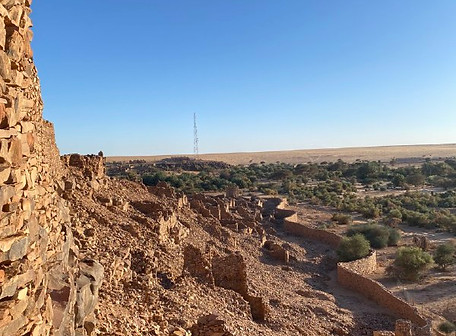
Ouadane
Ouadane is an ancient desert city located in Mauritania, North Africa. It holds great historical significance as a former trading and cultural hub along the trans-Saharan caravan routes. Founded in the 11th century, the city prospered due to its strategic location, serving as a crucial stop for caravans traveling between North Africa and West Africa. The city's architecture showcases a blend of African and Islamic influences, with ancient adobe buildings and a unique desert landscape. Despite its decline in prominence over the centuries, Ouadane remains an archaeological treasure, drawing in visitors with its rich history and cultural heritage. Today, it stands as a UNESCO World Heritage Site, preserving its captivating past and serving as a reminder of the region's ancient trade and civilization.
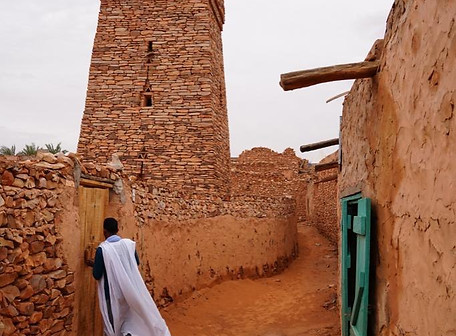
Chinguitty
Chinguitty is a historical city located in the Adrar Region of Mauritania, North-West Africa. Known for its rich cultural heritage and architectural significance, Chinguitty holds the distinction of being one of the oldest and best-preserved cities in the Sahara Desert. Founded in the 13th century as an important center for Islamic learning and trade along the trans-Saharan caravan routes, the city's ancient libraries and religious institutions have made it a UNESCO World Heritage Site. Visitors to Chinguitty can immerse themselves in the captivating charm of its traditional mud-brick buildings, narrow winding streets, and ancient mosques, reflecting the city's enduring cultural legacy and historical importance as a vital crossroads for African commerce and scholarship.

Banc d'Arguin
Banc d'Arguin National Park is a magnificent coastal reserve located in Mauritania, West Africa, and it serves as an incredible destination for nature enthusiasts and adventurous tourists alike. Spanning over 12,000 square kilometers, this UNESCO World Heritage Site offers a diverse ecosystem of sandy beaches, tidal flats, and vast wetlands, creating a haven for an impressive array of migratory birds, including flamingos, herons, and pelicans. Travelers visiting the park can witness one of the world's most important nesting sites for seabirds, and if they're lucky, spot rare species like the African Spoonbill and the Northern Bald Ibis. The park's waters are equally captivating, providing a safe sanctuary for dolphins, turtles, and even the elusive dugong. Whether it's birdwatching, exploring unique marine life, or simply immersing in untouched natural beauty, Banc d'Arguin National Park promises an unforgettable and enriching experience for all who venture there.
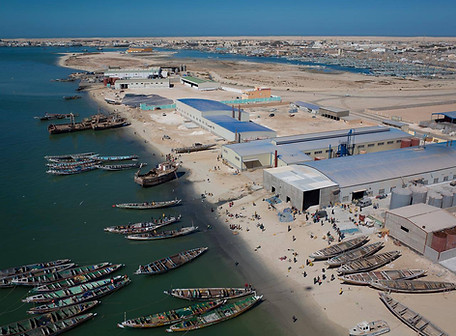
Nouadhibou
Nouadhibou, located on the Atlantic coast of Mauritania, is a captivating city that beckons tourists with its unique blend of natural beauty and maritime charm. Renowned as the country's economic hub, it boasts a thriving fishing industry and a bustling port, where visitors can witness colorful fishing boats and engage with local fishermen. For nature enthusiasts, the Banc d'Arguin National Park, a UNESCO World Heritage Site, awaits just a short distance away, showcasing a breathtaking array of migratory birds and diverse marine life. Travelers can also explore the intriguing shipwrecks that dot the coastline, remnants of the city's history as a former ship graveyard. Offering a taste of Mauritanian culture, Nouadhibou's lively markets, aromatic street food, and warm hospitality are sure to leave lasting impressions on all who venture to this charming city by the sea.
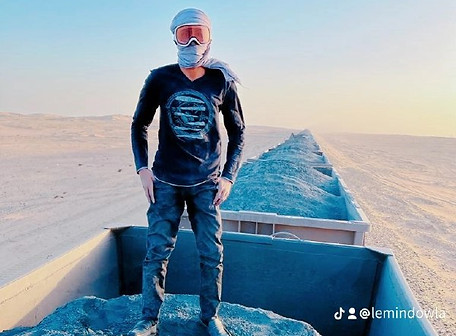
Riding the iron ore train of SNIM
Riding the iron ore train of SNIM (Société Nationale Industrielle et Minière) from Choum city to Nouadhibou city in Mauritania is a unique and adventurous experience that captivates tourists from around the world. This legendary train is one of the longest and heaviest in the world, stretching over two kilometers and hauling massive loads of iron ore across the Sahara Desert. Tourists are treated to breathtaking views of the vast desert landscapes and witness the challenging industrial operation up close. The journey offers a glimpse into the country's mining industry and its significance to the local economy. However, it's essential for tourists to be well-prepared for the rugged conditions, as the trip can be long and physically demanding. Nonetheless, the Iron Ore Train of SNIM promises an unforgettable and authentic adventure for daring travelers seeking a once-in-a-lifetime experience.
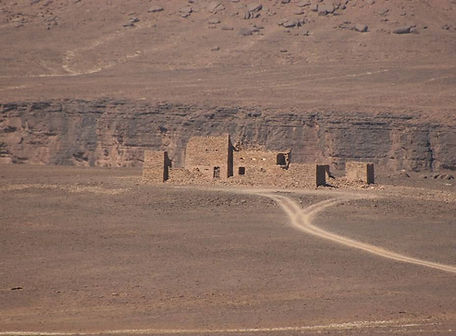.jpeg)
Fort Saganne
Fort Saganne is an enchanting historical landmark nestled amidst the vast desert landscape of Mauritania. Standing proudly against the golden sands, this ancient fortress exudes a sense of timelessness and echoes the tales of bygone eras. Its weathered walls bear witness to centuries of history, once serving as a bastion of defense for the region's early inhabitants. The fort's unique architecture reflects a fusion of indigenous Berber designs with influences from various civilizations that traversed the desert routes. As the sun sets, casting a mesmerizing glow over the horizon, Fort Saganne's allure captivates visitors, evoking a profound appreciation for the rich heritage and resilience of the Mauritanian people. Exploring its stone corridors and majestic towers, one can't help but feel a connection to the past and a deep reverence for the intrepid souls who once called this fort their home.

Azoueïga Dune
Welcome to Azoueïga Dune, a magnificent natural wonder located in the heart of the Saharan desert. Rising proudly at an impressive height of 300 meters, this awe-inspiring sand dune offers tourists a truly unforgettable experience. As you venture to the summit, you'll be rewarded with breathtaking panoramic views of the surrounding desert landscape, an extraordinary sight that promises to leave you in awe. Visitors can enjoy thrilling activities like sandboarding and camel rides, immersing themselves in the desert's enchanting charm. For those seeking a magical sunrise or sunset, Azoueïga Dune offers the perfect vantage point to witness nature's stunning displays. Whether you're a photography enthusiast, an adventure seeker, or simply a nature lover, Azoueïga Dune is a must-visit destination that will undoubtedly create lasting memories.
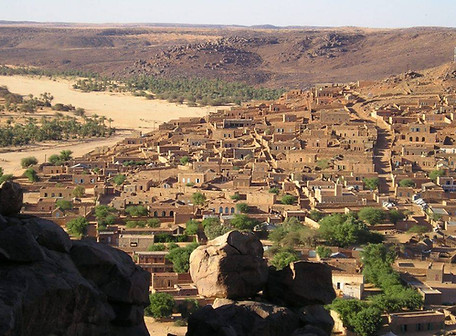
Al-Rashid
Al-Rashid, situated in central Mauritania's Tagant region, serves as the capital for the Kounta tribe and was founded in the 18th century by Aminouh Al-Kounti, a scholar. Aminouh invited scholars and tribal leaders, offering them gold and silver to use the land, with a condition to distribute part of it to the poor and needy. This arrangement, based on Islamic law, allowed for the protection of vulnerable classes even without a formal state intermediary. The city, comprising a mosque, madrasa, palace, and houses, thrived for years until its destruction by the French in 1908 during resistance led by Sheikh Mohamed Al-Mokhtar. Now an administrative center with around 20,000 inhabitants, Al-Rashid boasts picturesque palm oases across its 8,100 square kilometers.

Ben Amera
Ben Amera, standing majestically in the vast expanse of the Mauritanian desert, is a geological wonder that captures the imagination with its enigmatic presence. This natural monolith, often hailed as the world's largest monolith, rises stoically to a height of around 1,000 feet, seemingly defying the relentless forces of erosion that have shaped it over millennia. Its sheer, weathered cliffs, tinted in hues of warm ochre and burnt sienna, create a striking contrast against the surrounding golden sand dunes.
The solitude of Ben Amera evokes a sense of serenity and timelessness, as if it holds the secrets of ancient civilizations that once thrived in this arid land. Its rough, textured surface tells a tale of aeons of geological transformation, with each groove and crevice etching a unique story of the desert's turbulent past. As the sun makes its journey across the sky, casting ever-changing shadows on the monolith's surface, a dance of light and shade breathes life into its otherwise austere facade.
This geological marvel serves as a silent testament to the raw power of nature, offering a humbling reminder of humanity's place in the grand scheme of the universe. Visitors who venture to witness Ben Amera's awe-inspiring presence find themselves captivated by its sheer scale and untamed beauty, leaving with a profound appreciation for the untamed wilderness that still exists in our modern world.
.jpeg)
Tichit
Tichit: A Gem of the Mauritanian Desert
Tichit, a small oasis town nestled in the vast expanse of the Mauritanian Desert, is a mesmerizing gem that has withstood the test of time. Its unique blend of history, culture, and natural beauty makes it a remarkable destination for any adventurous soul seeking to immerse themselves in the wonders of West Africa.
As one approaches Tichit, the first sight that greets the eyes is the breathtaking landscape of sand dunes stretching as far as the eye can see. The shifting patterns of golden sands create an ever-changing canvas that dances with the wind's gentle caress. The silence of the desert engulfs visitors, allowing them to feel a deep sense of tranquility and connection to nature.
Upon arriving in the town, the historical significance of Tichit becomes apparent. It is recognized as a UNESCO World Heritage site due to its rich archaeological heritage. The ancient structures and ruins scattered throughout the area date back to the 5th century, bearing witness to the town's illustrious past as a prominent center of trade and learning in the region.
The architecture of Tichit reflects the ingenious methods employed by its inhabitants to adapt to the harsh desert environment. Mud-brick buildings with intricately designed facades stand tall, reflecting the skillful craftsmanship of generations past. Narrow alleyways wind through the town, leading to hidden courtyards and communal spaces where locals gather to share stories and traditions.
Tichit's culture is equally captivating. The town's population is predominantly of Moorish and Berber descent, and their customs and rituals have been carefully preserved over time. Visitors are warmly welcomed into the traditional tents of the nomadic tribes, where they can experience firsthand the nomadic way of life and partake in their vibrant music and dance.
The daily life in Tichit revolves around the ancient practices of desert living. The marketplace comes alive with vibrant colors and scents, as merchants proudly display their wares. Traditional crafts such as intricate pottery, woven textiles, and exquisite jewelry are proudly showcased, embodying the artistry of the region's talented artisans.
As the sun sets over the horizon, the beauty of Tichit takes on an ethereal quality. The golden hues of the desert merge with the soft pinks and purples of the sky, creating a breathtaking spectacle that leaves one in awe of nature's artistry. The night sky reveals an awe-inspiring display of stars, unobscured by light pollution, inviting contemplation and wonder.
In conclusion, Tichit is a living testament to the resilience and ingenuity of humanity, harmoniously coexisting with the desert's vastness. Its historical significance, cultural richness, and breathtaking landscapes make it an enchanting destination for travelers seeking to explore the hidden treasures of the Mauritanian Desert. Tichit offers an unforgettable experience, leaving an indelible mark on the hearts of those fortunate enough to witness its beauty and immerse themselves in its timeless allure.
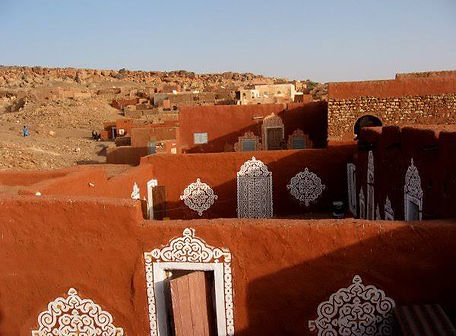.jpeg)
Oualata
Oualata, a place of enchanting beauty, nestled in the heart of Mauritania's vast desert, captivates the senses with its timeless charm. As the scorching sun rises, the ochre-hued sand dunes stretch endlessly, shimmering like golden waves under the azure sky. The town's architecture, a marvel of earthen craftsmanship, seems to rise from the very sands that surround it.
At the heart of Oualata lies the ancient medina, a labyrinth of narrow alleys and intricately adorned houses. Walls adorned with geometric patterns in soft pastel shades, skillfully created by skilled artisans, tell the stories of generations past. The tranquil courtyards, hidden from the bustling streets, provide a respite from the relentless desert sun and offer a glimpse into the lives of the locals.
As evening approaches, the town takes on a magical aura, with the setting sun casting a warm glow over the landscape. The air becomes filled with the aromatic scents of traditional cuisine, drawing visitors to savor the flavors of the desert. The vibrant market comes alive, bustling with merchants adorned in vibrant fabrics, offering an array of treasures and handicrafts.
Beyond the medina's boundaries, the desert beckons with its ethereal allure. Venturing into the dunes, one is embraced by a surreal silence, broken only by the gentle whispers of the desert wind. The vastness of the landscape, seemingly endless, instills a sense of humility and wonder, connecting the soul to nature's grandeur.
Throughout the night, the celestial dome becomes a mesmerizing canvas, adorned with countless stars that seem to twinkle with ancient secrets. The soft whispers of the wind continue, lulling travelers into a peaceful slumber under the vast desert sky.
In Oualata, time seems to stand still, and the spirit of antiquity lingers in every grain of sand. It is a place where the past and present coexist harmoniously, inviting visitors to immerse themselves in its rich history and immerse their senses in its timeless beauty. A journey to Oualata is a pilgrimage to a forgotten world, an experience that leaves an indelible mark on the hearts of those who venture into its magical embrace.

The Richat Structure
The Richat Structure, also known as the Eye of the Sahara, is a remarkable geological formation located in the Sahara Desert, Mauritania. Spanning a diameter of approximately 50 kilometers, this enigmatic circular structure stands out as a prominent feature when viewed from space. Despite its initially perplexing appearance, scientific research has revealed that the Richat Structure was not formed by a meteorite impact or volcanic activity but is, in fact, a highly eroded and uplifted geological dome. The structure's unique concentric rings of alternating sedimentary layers, including limestone, sandstone, and shales, showcase millions of years of Earth's geological history. Its captivating central depression, which was likely shaped by erosion and subsidence, gives it the appearance of a giant eye, thus earning its evocative nickname. The Richat Structure remains a captivating mystery and a fascinating destination for geologists, astronomers, and travelers seeking the wonders of our planet's natural history.
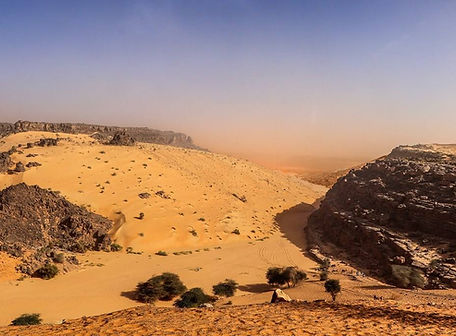.jpeg)
Tifoujar Pass
Tifoujar Pass is a mountain pass in Mauritania. It is located in the Adrar Plateau, 400 km northeast of the capital Nouakchott. The pass, completely sandy, dominates an eponymous gorge which ends in the Oued el Abiod or White Valley on the eastern side and originates the erg Amatlich on its western slopes
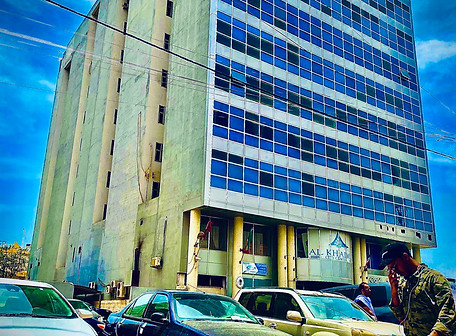
Nouakchott
Nouakchott, the capital city of Mauritania, offers an intriguing blend of modernity and traditional charm that attracts tourists seeking a unique North African experience. Situated along the picturesque Atlantic coastline, the city boasts stunning sandy beaches where visitors can relax and unwind. Nouakchott is renowned for its bustling markets, such as the vibrant Port de Pêche, where one can savor freshly caught seafood and immerse in local culture. History enthusiasts can explore the National Museum of Mauritania, showcasing a fascinating collection of artifacts, crafts, and ancient Islamic manuscripts. The city's distinct architecture, characterized by striking minarets and Moorish-inspired buildings, adds to its allure. Nouakchott is also an excellent gateway for travelers venturing into the Sahara Desert, offering opportunities for camel treks and desert adventures. A visit to this captivating city promises a memorable journey into the heart of Mauritanian culture and landscapes.

Matmata Lake
Nestled within the heart of Mauritania's desert landscape lies the enigmatic Matmata Lake, home to a rare and ancient treasure. In 2005, Spanish scientists embarked on a groundbreaking study of a lineage of Nile crocodiles, their remarkable existence spanning an astonishing nine millennia amidst the wilderness of Mauritania's Brakna region. This secluded oasis, discovered by French students in the 1990s, spans a mere hundred square meters, a testament to the resilience of life in the face of arid adversity. Descendants of these crocodiles sought refuge in this tranquil haven, as lush greenery gave way to barren sands, transforming the once verdant oasis into a desolate expanse. Spanish researchers marveled at the abundance of microscopic organisms thriving in the lake's algae-rich waters, sustaining a delicate ecosystem where fish flourish and crocodiles thrive. These prehistoric creatures, measuring up to 2.2 meters in length, find sanctuary in Matmata Lake, the largest gathering of crocodiles in Mauritania. Scientists speculate that the presence of these crocodiles in the desert harkens back to a time when the Sahara was fertile, dotted with lakes and rivers—a testament to the enduring mysteries of nature's past. Yet, they caution against the encroachment of human activity, warning of the peril posed by shepherds and pesticides, which threaten the delicate balance of life in this ancient oasis. Matmata Lake stands as a testament to the resilience of life in the desert, a sanctuary where time stands still amidst the sands of Mauritania's Brakna region.

Tanouchert Oasis
Nestled gracefully between Ouadane and Chinguitty lies the enchanting Tanouchort Oasis, a vital resting point for weary caravans traversing the desert expanse. Here, amidst the unforgiving sands, travelers find solace in the promise of replenishment, greeted by the refreshing embrace of water and the bounty of nourishment. As the beating heart of the white valley, this oasis beckons tourists with its tale of resilience, where humanity has triumphed over the arid terrain, cultivating life amidst the desolation. Visitors pause to marvel at the ingenuity of those who conquered the desert, witnessing the lush greenery of palm trees and thriving gardens amidst the barren landscape. Amidst the tranquility, locals extend warm hospitality, their kindness manifesting in freely offered tea and engaging conversations. During breaks, the laughter of children fills the air as they eagerly welcome visitors, while young ladies showcase their handcrafted souvenirs, each item a testament to their heritage and craftsmanship. For the adventurous souls, the journey to the oasis is not without thrills, with towering dunes offering an invitation to embrace the spirit of exploration and perhaps a taste of the exhilaration that the Rally Dakar once promised. Tanouchort Oasis stands as a testament to the enduring spirit of humanity in the face of nature's trials, a haven of warmth and wonder amidst the vast desert expanse.

Ksar El Barka
Ksar El Barka, nestled within the heart of Mauritania's desert landscape, stands as a timeless testament to the region's rich cultural heritage and architectural ingenuity. This ancient fortified village, situated along the historic caravan routes, serves as a living testament to centuries of trade and cultural exchange. Characterized by its distinctive mud-brick structures, intricate labyrinthine alleys, and towering ramparts, Ksar El Barka offers visitors a glimpse into a bygone era. The village's strategic location facilitated trade between North Africa and West Africa, making it a bustling hub of commerce and cultural convergence. Today, visitors are enchanted by the village's well-preserved architecture and vibrant local culture. From the bustling markets filled with colorful textiles and traditional crafts to the tranquil courtyards adorned with ornate tile work, every corner of Ksar El Barka exudes a sense of timeless charm. As travelers wander through its winding streets, they are transported back in time, immersing themselves in the rich tapestry of Mauritanian history and culture. Ksar El Barka stands as a living testament to the resilience of the desert communities and serves as a captivating destination for those seeking to uncover the hidden treasures of Mauritania's past. Situated approximately 50km north of Moudjeria in the Tammourt en Naaj, Ksar El Barka has been an important center for pastoralism and agriculture for thousands of years. Originally built by the Fula Jaawbe clan as their capital, known as Laaci-Wendu, the town later became Ksar El Barka. Over time, it witnessed various conflicts and changes in rulership, including the invasion by the Lamtuna dynasty from Takrur and subsequent rule by the Jolof Empire. In 1690, the Kounta, fleeing desertification from Ouadane, settled in the area, adding to its cultural mosaic. The town's history is a tapestry woven with the threads of different cultures and civilizations, each leaving their mark on its landscape and heritage. Today, Ksar El Barka stands as a reminder of the resilience and adaptability of the people who have called this desert oasis home for centuries.

Diawling National Park
Nestled in the heart of southwestern Mauritania lies the breathtaking Diawling National Park, a haven of unparalleled natural beauty and biodiversity. Established in the late 1990s as a beacon of hope amidst environmental challenges, this park serves as a beacon of restoration for ecosystems and wildlife alike. Encompassing approximately 16,000 hectares along the majestic Senegal River, the park's landscape boasts a diverse tapestry of dunes, floodplains, and coastal wetlands, creating a sanctuary for an astonishing array of flora and fauna.
Prior to its designation as a protected area, the region surrounding Diawling National Park was teeming with life, sustaining thriving communities engaged in fishing, farming, and tourism. However, the construction of the Manantali and Diama dams along the Senegal River basin altered the delicate balance of this ecosystem, leading to the decline of natural resources and threatening the livelihoods of local populations. Despite these challenges, relentless efforts towards conservation and rehabilitation have breathed new life into the park.
Today, Diawling National Park stands as a testament to the power of restoration and preservation. Home to over 300 species of birds, including rare migratory birds and the iconic lesser flamingo, it offers a captivating spectacle for birdwatchers and nature enthusiasts alike. As you explore the park's vast expanse, you may encounter a menagerie of wildlife, from playful monkeys and graceful warthogs to elusive monitor lizards, adding an element of adventure to your journey.
Whether you're drawn to the park's rich avian diversity or its scenic landscapes, a visit to Diawling National Park promises an unforgettable experience. While facilities within the park are modest, with traditional-style tents available for overnight stays, the opportunity to immerse yourself in nature's splendor far outweighs any luxury. So pack your bags, embark on a journey of discovery, and let the untamed beauty of Diawling National Park leave an indelible mark on your soul.

Terjit Oasis
Terjit Oasis is a hidden gem nestled within the heart of the Mauritanian Sahara desert. Its allure lies in a stunning contrast of vibrant green palm trees and vast mountain circles. Located near the town of Atar, this oasis is a testament to nature's resilience in an otherwise harsh environment. Travelers seeking refuge from the arid climate are welcomed by the refreshing freshwater springs and the peaceful atmosphere that pervades the area. Terjit Oasis offers a unique blend of natural beauty and tranquility, making it a must-visit destination for those in search of a serene escape amidst the rugged beauty of the Sahara.

Agrour Rock Paintings
The Agrour Rock Paintings, with a history spanning 6000 years, offer a captivating glimpse into the primitive human life that once thrived in the Agour region of Adrar province. These ancient artworks serve as a testament to the lifestyle of the indigenous inhabitants who relied on hunting and livestock breeding. Nestled on a rocky hill towering 690 meters above the ground, these paintings constitute the richest collection of rock art in Mauritania. Situated along the renowned Amogjar Pass, a 40-kilometer tourist route, Agrour provides a valuable record of the region's history, where rock paintings served as the sole means of documentation in ancient times. Despite the weathered and eroded state of many of these paintings, they still vividly portray scenes of pastoral life, wildlife, and human activities, preserving a unique legacy of the past amidst the harsh Sahara Desert landscape.

Atar
Nestled amidst the sweeping dunes of the Sahara Desert, Atar is a captivating oasis town in Mauritania that beckons adventurers seeking an authentic desert experience. Serving as the gateway to the Adrar Plateau, Atar boasts a rich cultural heritage and breathtaking natural scenery. Wander through the labyrinthine alleys of its old town, where ancient mud-brick buildings adorned with intricate carvings whisper tales of centuries past. Discover the vibrant markets, where locals gather to barter for spices, textiles, and handicrafts, showcasing the region's artistic traditions. For nature enthusiasts, Atar offers access to stunning landscapes, from towering sand dunes to rugged mountains and verdant oases. Explore the nearby Terjit Oasis, a verdant paradise hidden amidst rocky cliffs, where you can relax in natural pools fed by cool, clear springs. Whether you're drawn to its historic charm, awe-inspiring scenery, or cultural richness, Atar promises an unforgettable journey into the heart of Mauritania's desert landscape.

Mh'aireth Oasis
Nestled within the Adrar region, Mhaireth Oasis unfolds its allure over more than 10 kilometers, making it one of Mauritania's largest oases. Just 30 kilometers from Atar, this verdant haven showcases a majestic tapestry of date palm trees, with its small dates renowned for a subtly sweet flavor. Perched atop surrounding cliffs, it offers a breathtaking panorama of traditional "tikit" structures, providing respite from the desert heat. Venture to the southern reaches, and you'll encounter enchanting lakes, doubling in size post the rainy season. Mhaireth invites you to savor its tranquility, whether swimming in the refreshing Guelta, hosting a lakeside barbecue, or simply basking in the picturesque harmony of black mountains, golden dunes, vibrant palm trees, lush grass, and the azure sky on clear days.